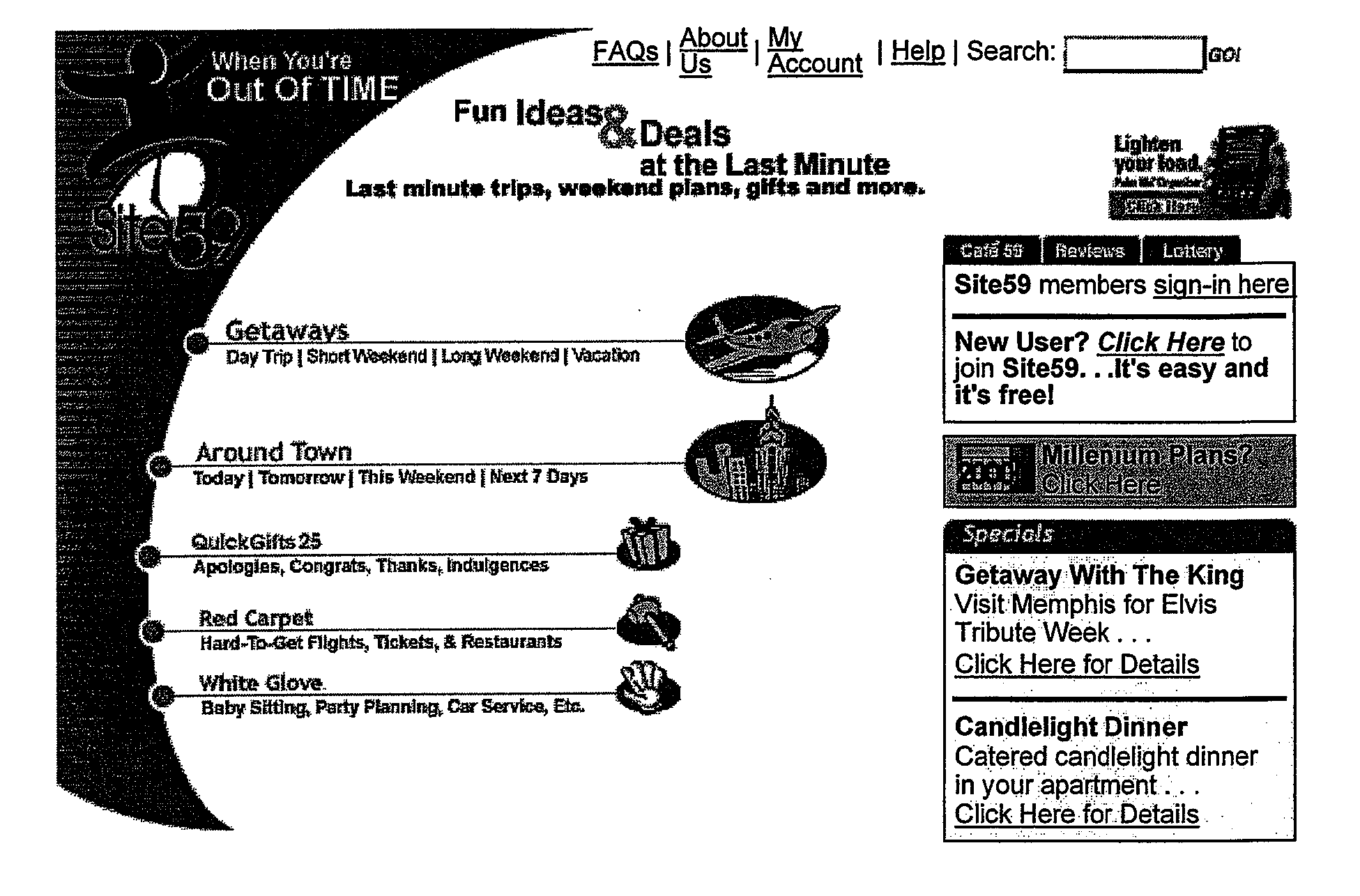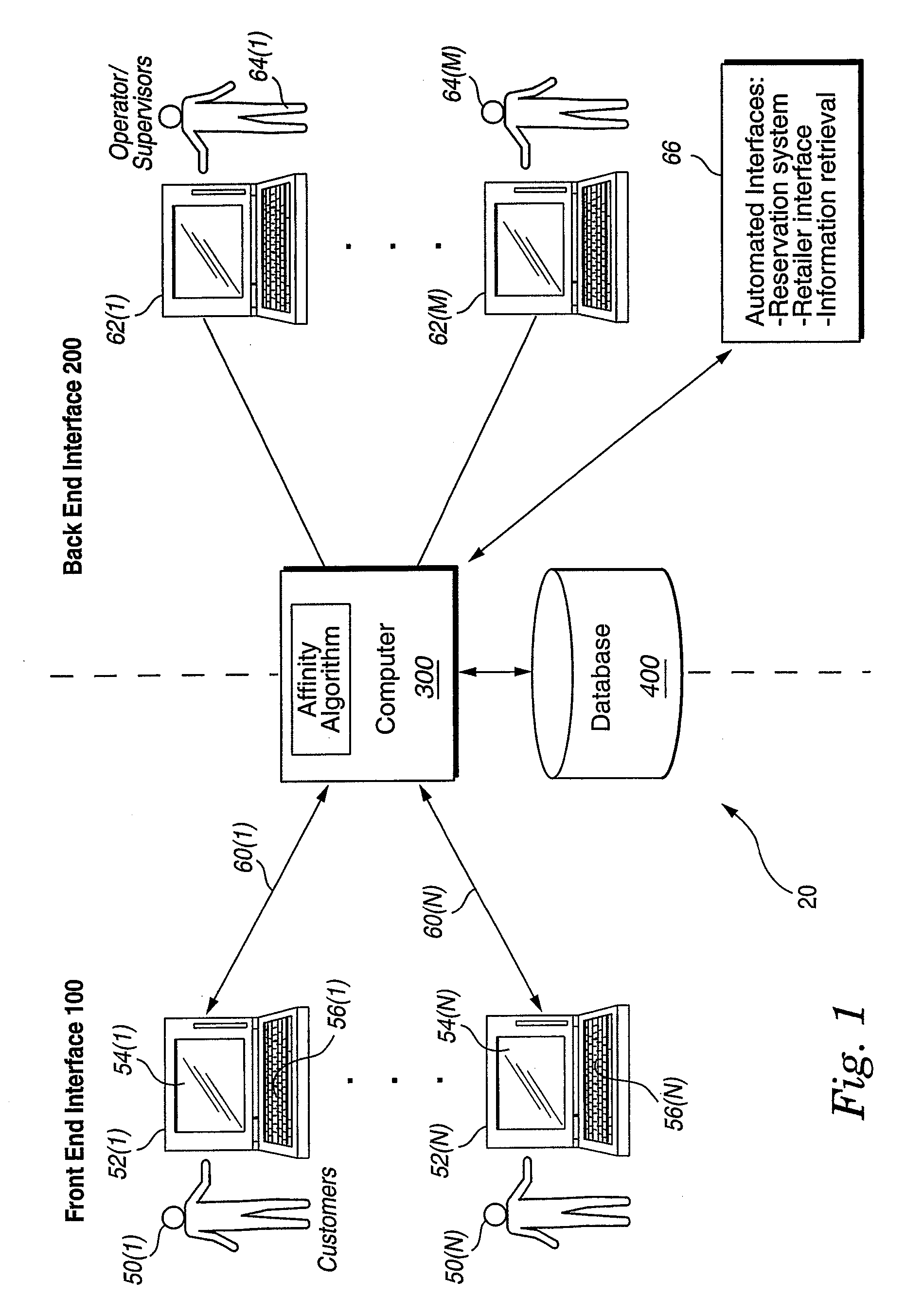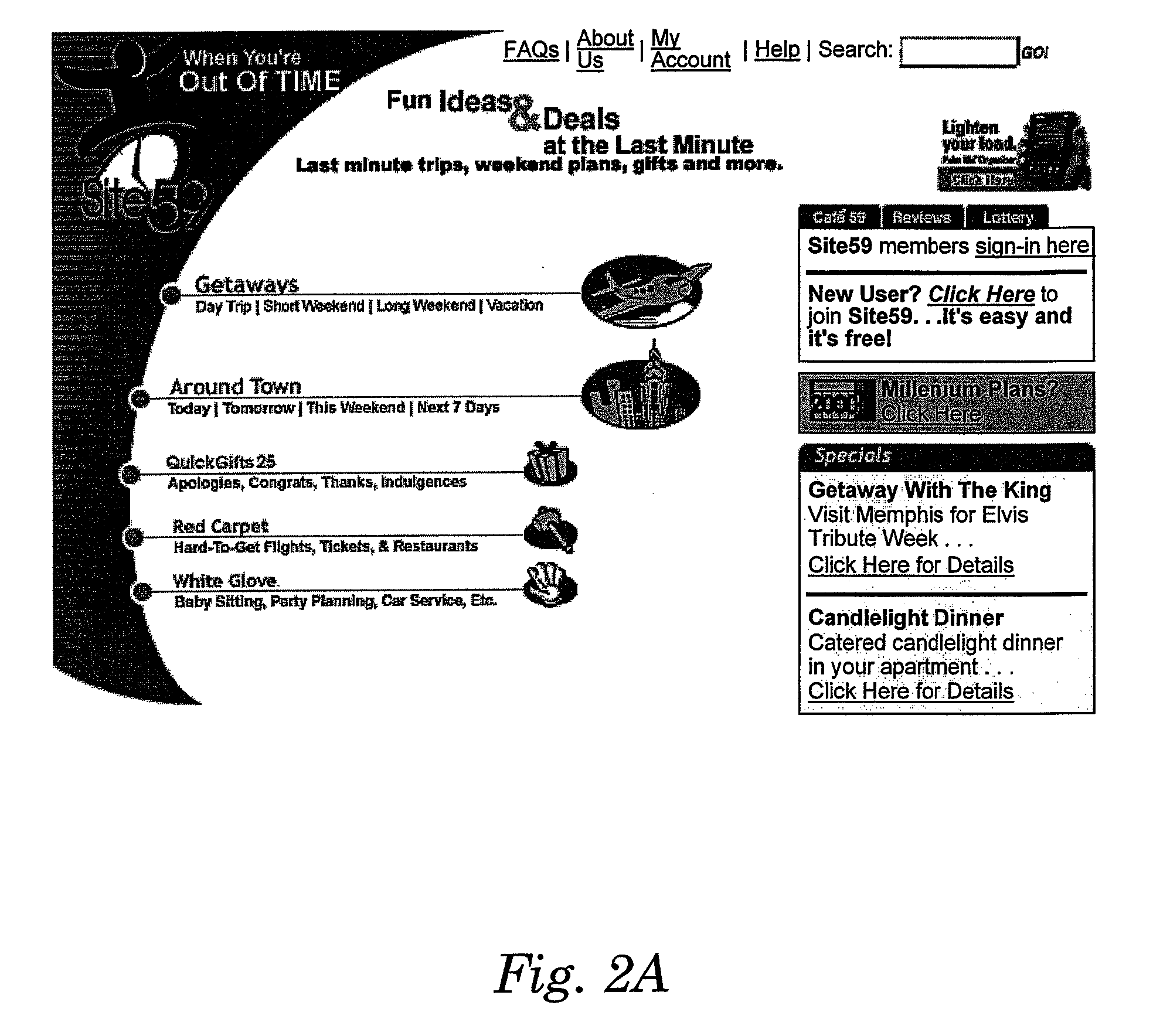System and Method for Grouping and Selling Products or Services
a technology of product or service and grouping, applied in traffic control systems, navigation instruments, instruments, etc., can solve the problems of affecting the business of airlines, affecting the profitability of airlines, and wasting approximately $84 billion of travel service provider capacity unused each year, so as to increase the geographic reach of today's corporations, the effect of increasing workdays and high penetration
- Summary
- Abstract
- Description
- Claims
- Application Information
AI Technical Summary
Benefits of technology
Problems solved by technology
Method used
Image
Examples
example travel services application
[0075] In one particular advantageous example, system 20 provides an on-line service to break the compromise for consumers between high quality. good value solutions and last minute planning. System 20 can present consumers 50 with an interactive user interface via appliances 52 that creates a last minute entry point for consumers focused on last-minute leisure. FIG. 2A shows an example homepage displayed by system 20 presenting a menu of five example options: [0076] Escape—short trip, long weekend, vacation [0077] Local Flavor—today, tomorrow, this weekend, this week [0078] Wrapped and Ready—apologies, congratulations, thanks, indulgences, etc. [0079] Red Carpet—Hard-to-get “must-have” items (sold via auctions)—flights, tickets, hotel rooms, and restaurant reservations [0080] Beck and Call—Last-minute services such as party planning, baby-sitting, car service, dry cleaning, etc.
[0081] System 20 in this particular example focuses on the last minute, offering solutions in a rolling ...
example item
Entry
[0142] One of the functions performed by system 20 is to input items (for example, travel inventory) into database 400 so it is available for creating packages. Item entry can be performed via the operator interface 206 and operator appliances 62 shown in FIG. 2. Alternatively, or in addition. items can be entered automatically by computer via various interfaces from a computer reservation system 208 and other supplier databases 210, and / or via e-mail or html supplier interfaces 206. One example item entry process is shown in FIGS. 4A-4C.
[0143] In this example item entry, an operator 64 at the back end 200 views available item descriptions from an external inventory list, perhaps held in an external computer system (FIG. 4A). These items may be products or services. The operator 64 then selects items to enter into the server computer system according to some criteria. The items are described by the operator as having certain attributes; the attributes may simply be arbitrary t...
example affinity
[0151] In this example, computer 300 executes an affinity algorithm to find items entered into the computer that can be used to make up a package defined by a schema 500. Briefly, the affinity algorithm is used to match or otherwise satisfy the previously entered schema 500 based on items previously entered and available in database 400. One possible affinity algorithm 600 (shown schematically in—FIG. 6) is:
[0152] Initialize the candidate set to empty
[0153] For each package schema [0154] For each mandatory element in the package schema [0155] For each item [0156] If the item attributes include the required attributes of the element, and the item affinity coordinates match the affinity constraints of the element, then continue to the next mandatory element [0157] Otherwise continue to the next item. [0158] If no item matches the mandatory element, continue to the next package schema.
[0159] 1. When matching items have been found for all the mandatory elements, then add the...
PUM
 Login to View More
Login to View More Abstract
Description
Claims
Application Information
 Login to View More
Login to View More - R&D
- Intellectual Property
- Life Sciences
- Materials
- Tech Scout
- Unparalleled Data Quality
- Higher Quality Content
- 60% Fewer Hallucinations
Browse by: Latest US Patents, China's latest patents, Technical Efficacy Thesaurus, Application Domain, Technology Topic, Popular Technical Reports.
© 2025 PatSnap. All rights reserved.Legal|Privacy policy|Modern Slavery Act Transparency Statement|Sitemap|About US| Contact US: help@patsnap.com



